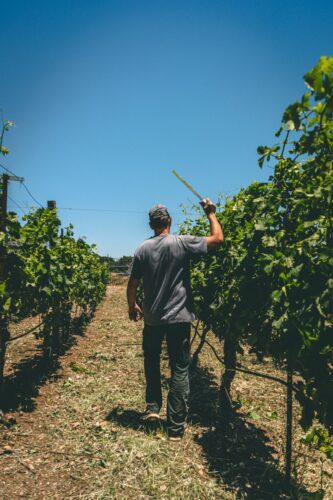
Nanocraft
CBD is surging in popularity these days, and with full …
CBD is surging in popularity these days, and with full legalization, products can be found everywhere from retail dispensaries to online marketplaces. And with high demand, supply is bound to increase as well. CBD companies have been burgeoning like tomorrow, with the last estimate putting the number around 900 in North America alone.
With so many CBD companies vying for your attention, it’s essential to know that not all CBD is the same. While the quality and marketing of a specific company might sound appealing, one of the most critical factors you should examine is the sourcing and production of the CBD.
Unlike other supplements or health products, CBD needs to be harvested, manufactured, and distilled in particular ways for it to retain the whole range of beneficial compounds. Some companies, though, cut corners to fatten up their profit margins, leaving you in the lurch. So in this article, we shall take a comprehensive look at sourcing, manufacturing, and production of CBD as well as what makes for a high-quality product.

The very first stage of quality CBD products usually involves organic farming practices. CBD is made from whole hemp plant extracts, and most commonly, either Cannabis Sativa or Indica are used. These plants are grown in nutrient-rich soil using potent, regulated, non-GMO seeds and should be completely free from pesticides, herbicides, etc.
By law, only contract farmers with permits are allowed to cultivate hemp. All plants should have less than 0.3% THC in accordance with local regulations with quality control and storage facilities being strictly monitored.
Harvesting can be undertaken by either manual or mechanical labor. Since hand labor can be time-intensive in cases of high demand, only small family-owned choose to go in the way of handpicking the hemp and cutting off its stems.
Machines such as debudders and buckers are fed with hemp plants, which are stripped by rollers of their leaves and buds.
Once the plants are cultivated, they are picked and safely dried before being sent for processing. Milling machines are used to turn the dried plants into a coarse powder. Once their fineness is determined to match up to industry standards, they are sent to an ISO certified manufacturing facility for production.
This is one of the most important stages in the manufacturing process, and probably determines the final quality of the CBD. While there are different methods utilized for hemp extraction, they all have the same objective of organic preservation, removal of contaminants, and extraction of pure hemp oil.
The most commonly used methods are supercritical CO2 extraction and alcohol extraction process. With the carbon dioxide, a high level of heat is used to separate the cannabinoids, while ethanol is often used as an extra processing layer to ensure higher quality.
Due to the fact that hemp is quite unpredictable in its content ratio, the extract needs to be appropriately distilled. This will ensure the resulting product has the proper amount of CBD, cannabinoids, terpenes, and the ilk as advertised.
The components are usually isolated and then infused into specific CBD items. So oil, capsules, topicals, and vapes often will carry the term “infused with CBD” on their packaging. The strategy enables companies to have a controllable measure of CBD in products. This allows companies to mass produce products without variations in their effects, flavor, taste, etc.
A good quality hemp extract should have 80% CBD at the least with cannabinoids, terpenes, and other compounds making up for the rest. This, of course, only applies to full spectrum CBD products. Broad spectrum and CBD isolates go through further processing to ensure THC is completely removed.
While full spectrum hemp extracts retain around 0.3% THC, which gives the user entourage effects, a further processing method is used to obtain CBD isolates.
THC is the compound that gives one the psychoactive high with marijuana, and while 0.3% isn’t significant enough in most cases, there are reasons some people would prefer to avoid it. Broad spectrum CBD has no THC but retains other cannabinoids, terpenes, flavonoids, etc.
CBD isolate, on the other hand, goes through additional processing methods of washing and polishing. This results in what is termed as the purest form of CBD. Isolate products typically have upwards of 99% CBD, and no other phytochemical compounds.
Once the production process is complete, all products are tested both by in-house laboratories and independent third-party labs. Usually, the products are analyzed for their cannabinoids profiles, terpenes and phytochemical content, presence of contaminants, and residues, among others.
They are then given a certificate of analysis, and test results are published on the website. Most reputed brands publish either batch or even individual product test results.
This is a new production method used by individual companies to make CBD more bioavailable. Nanotechnology is used to emulsify the CBD products, which has been shown to make them thrice as bio-available in comparison to just oil and water-based products.
Crafting high-quality CBD products involves a series of complicated steps. Taking a shortcut at any point would only result in the deterioration of the product quality, and you, as the final customer, would suffer.
So take a few minutes to read the manufacturing practices of every company before you purchase CBD products.
Comments (0)